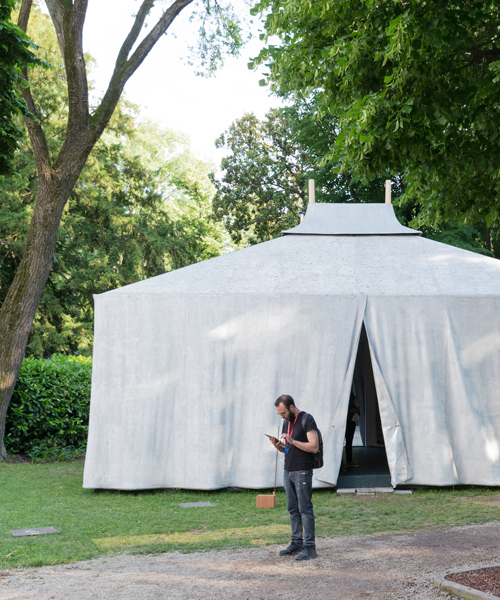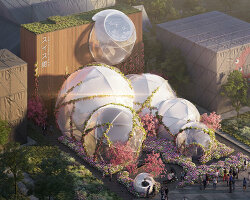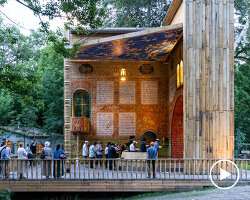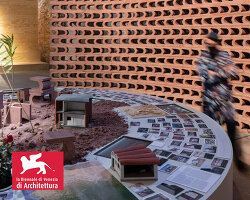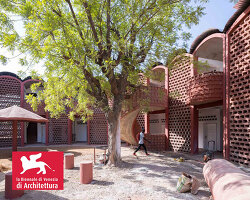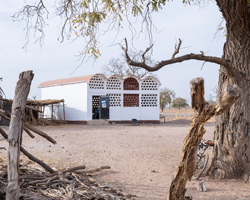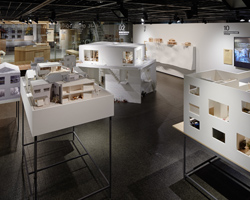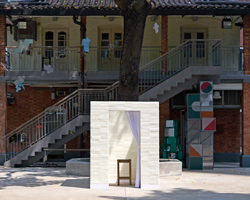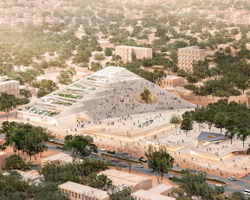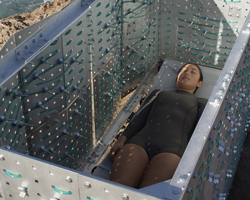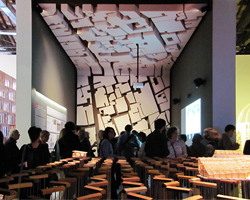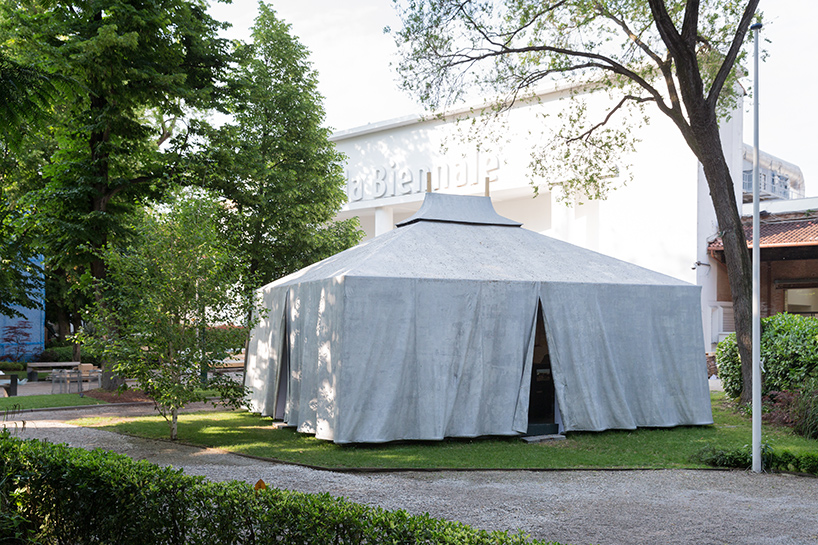
at the 2016 venice architecture biennale, architect manuel herz has collaborated with the national union of sahrawi women to create a pavilion for western sahara — a disputed territory located at the northern edge of the african continent. the country was formerly a spanish colony, but has been occupied by by morocco since 1975. ‘with the beginning of a guerrilla war against morocco, most of the western saharan population — the sahrawis — had to flee across the border into algeria where it settled in refugee camps, today housing approximately 160,000 sahrawis,’ says herz. ‘even though the sahrawis do not have control over their own country, they proclaimed independence of the western sahara on february 27, 1976. its sovereignty is recognized today by approximately 40 countries, though its status remains unresolved.’
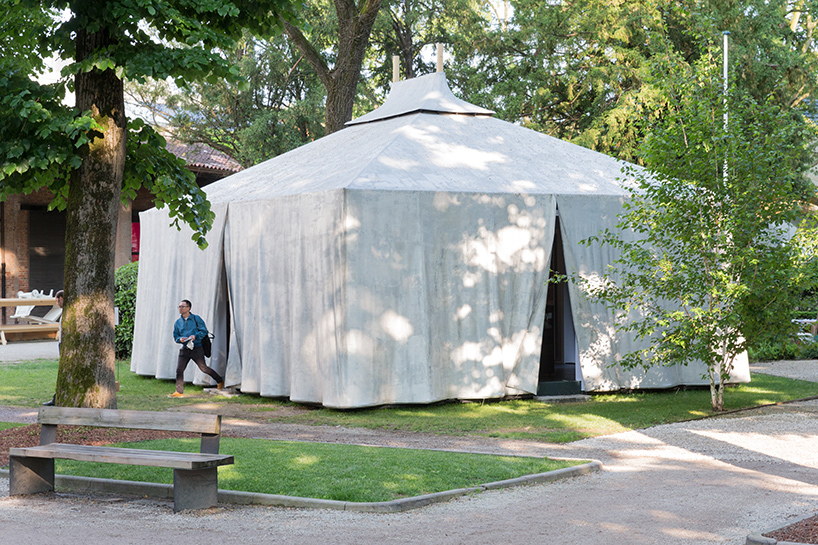
the tent-like pavilion erected in venice’s giardini
image © iwan baan (also main image)
the pavilion, which responds directly to the biennale’s ‘reporting from the front’ theme, considers the role and nature of the region’s refugee camps. having occupied such camps for 40 years, manuel herz explains that the sahrawi population has developed a unique set of urban and architectural tools, as well as design methodologies to deal with the condition of transience. consequently, the architecture addresses issues such as permanence and temporality, modesty and decoration, and tradition and modernity. ‘these terms are not understood as opposites, but they always co-exist simultaneously in the architecture of the camps,’ adds herz. ‘spaces of everyday life show how the camp is used as a field of social, cultural, economical and political exchange, thus giving the camps an urban quality. it recognizes the importance of ‘normality’ in an abnormal condition.’
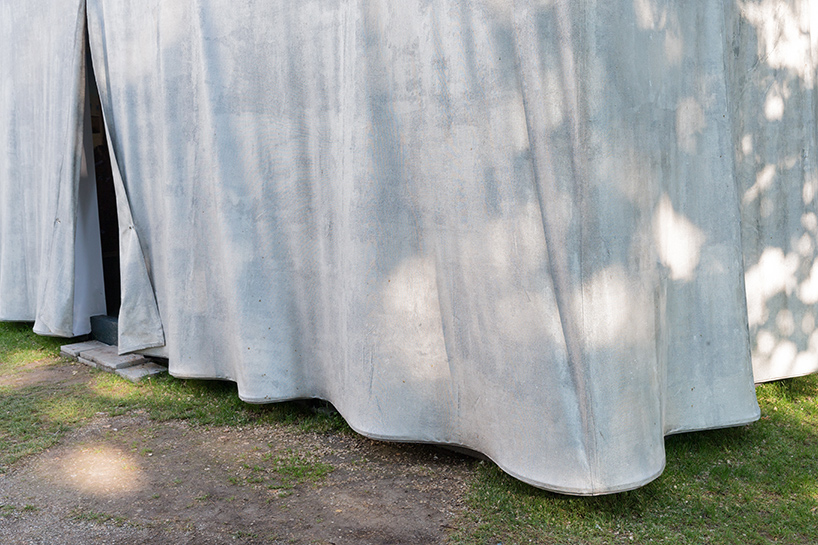
the project marks the first time that a nation in exile is represented at the venice architecture biennale
image © iwan baan
in 1976, the region’s first camp was established. named ‘rabouni’, the area became the de-facto capital of the refugee nation containing a parliament, several ministries, a national archive, and a national museum. ‘the settlement is a direct result of the semi-sovereignty that was granted to the refugees by algeria’, continues manuel herz. ‘the sahrawi refugees are in charge of their own lives and are not governed by other authorities. rabouni reflects this autonomy. it is a physical manifestation of the camp and its architecture as a device for nation-building, and as a political project. the sahrawis have thus developed a novel understanding of what role a refugee camp can play. they have proactively used the refugee camps as an opportunity to prefigure their nation, and as tools for social emancipation.’
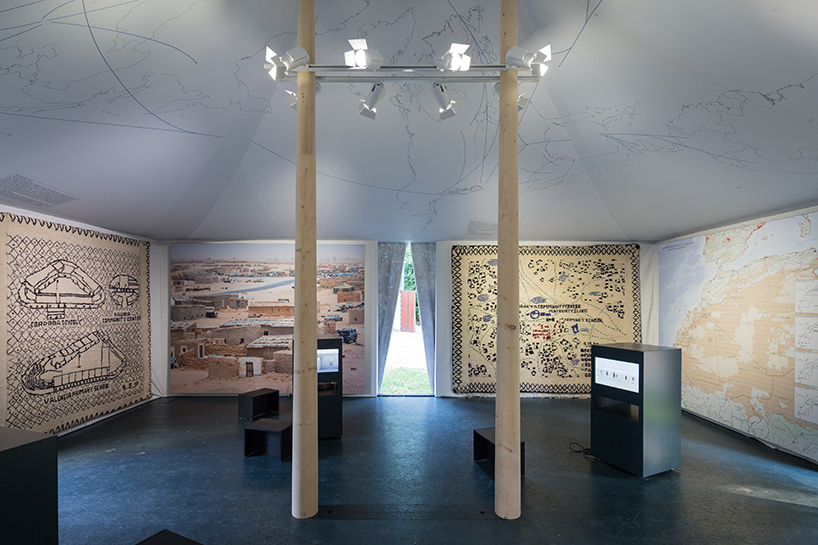
the pavilion seeks to offer a new perspective on refugees as self-determining and sovereign individuals
image © iwan baan
presented at the giardini, alongside other national pavilions, the project marks the first time that a nation in exile is represented at the venice architecture biennale. with the topic of migration prevalent in contemporary media coverage, the pavilion seeks to offer a new perspective on refugees as self-determining and sovereign individuals. inside the tent-like structure, large-scale tapestries are exhibited — produced with the national union of sahrawi women in the refugee camps.
for more images, follow designboom on our dedicated instagram account @venice.architecture.biennale.
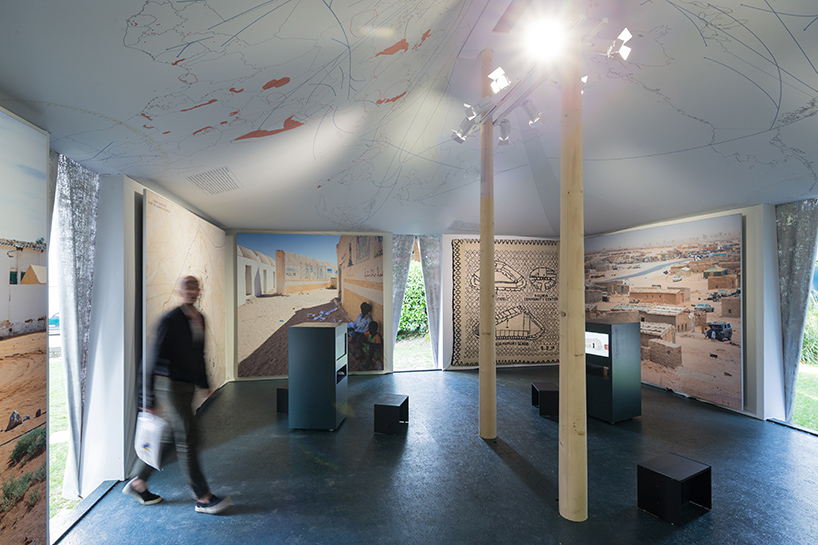
inside, large-scale works have been produced with the national union of sahrawi women
image © iwan baan
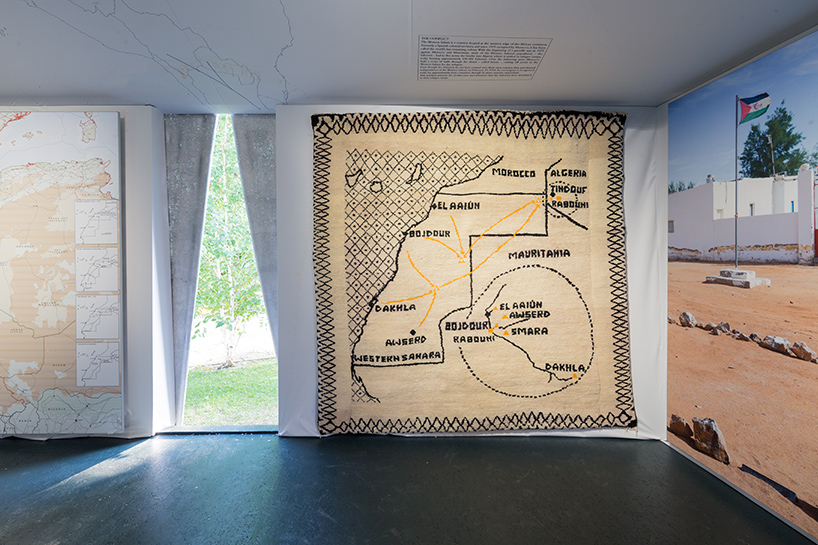
maps have been recreated as tapestries
image © iwan baan
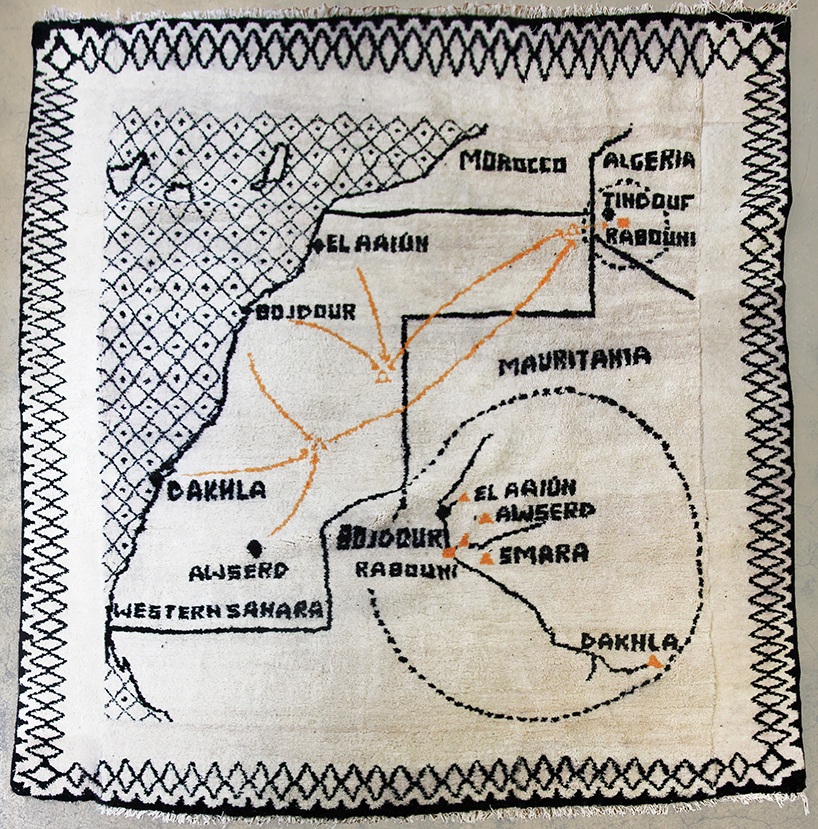
map detailing areas of conflict
image © manuel herz architects
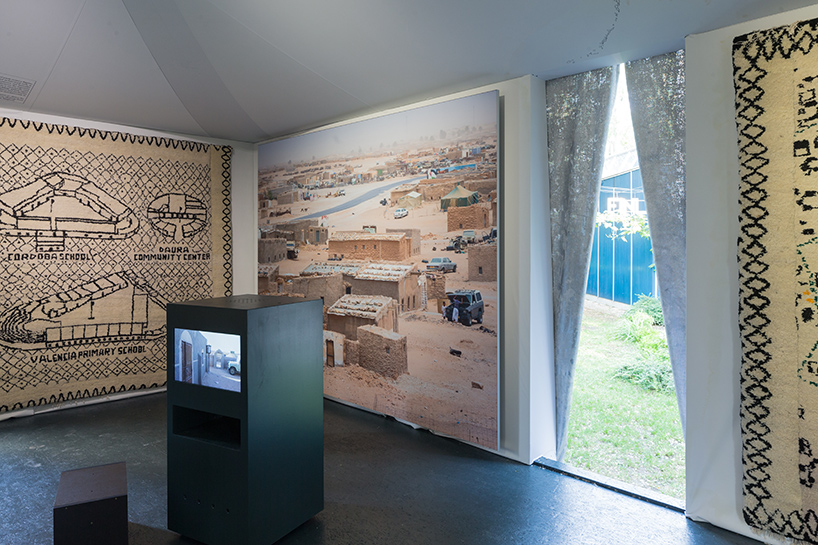
videos are also presented within the pavilion
image © iwan baan
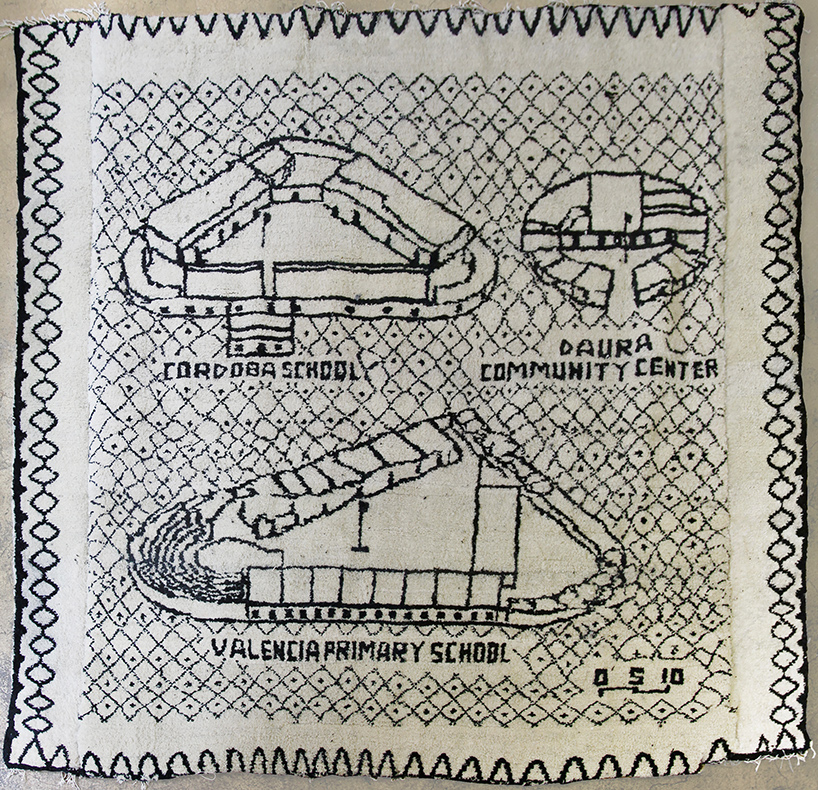
the community’s architectural landmarks are presented
image © manuel herz architects
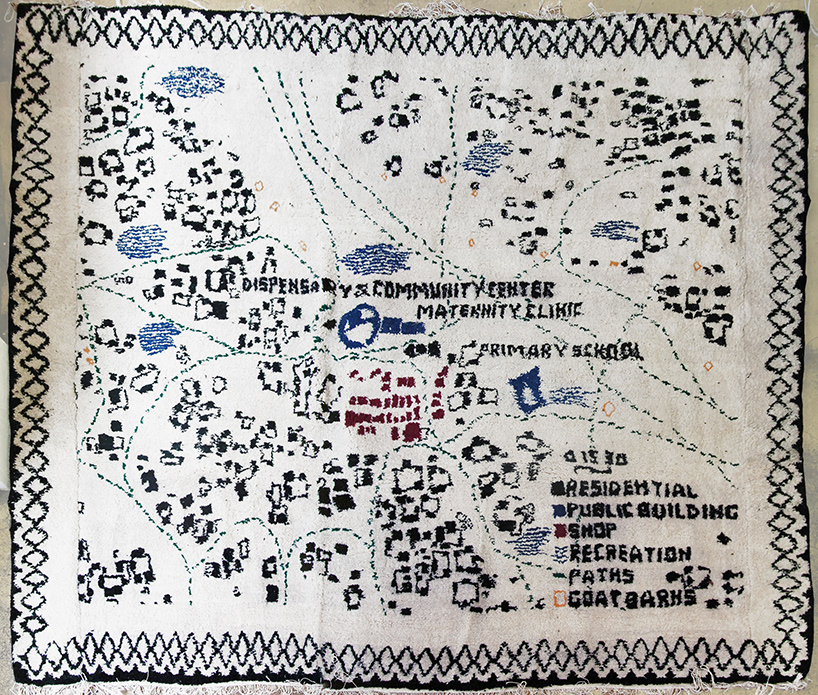
a tapestry highlighting rabouni’s everyday functions
image © manuel herz architects
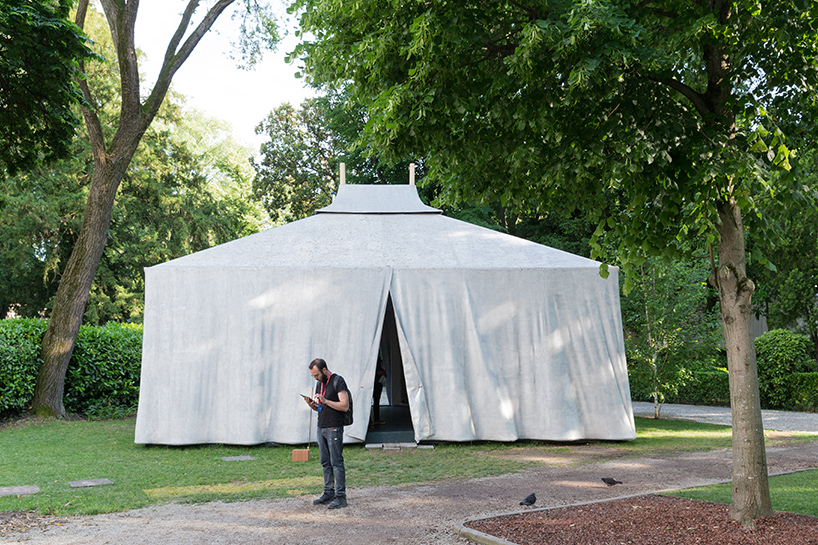
the pavilion remains on display in venice until november 27th, 2016
image © iwan baan
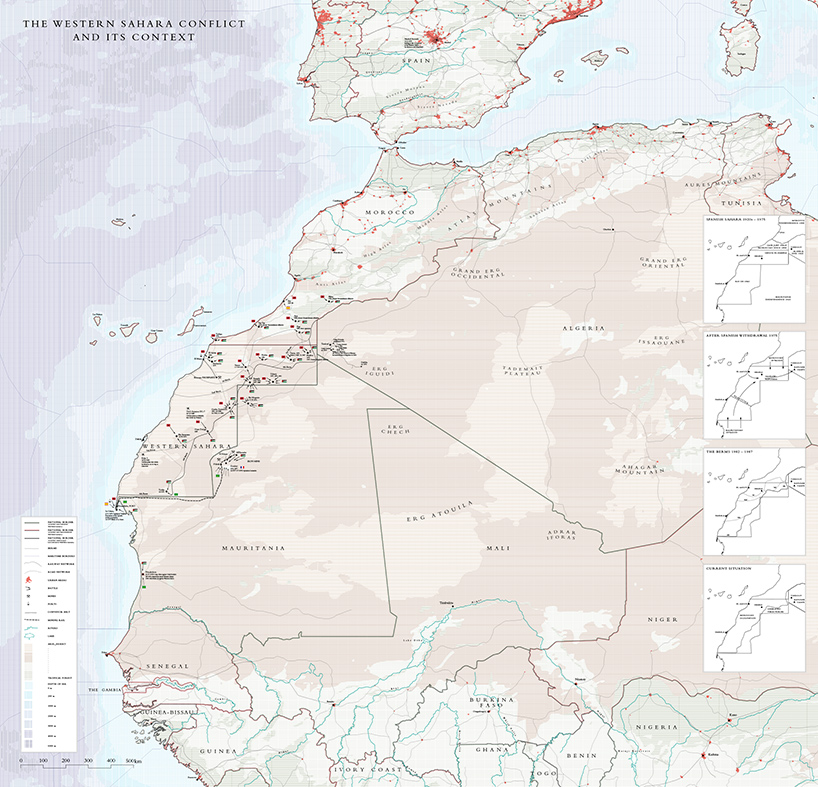
the western sahara conflict and its context
image © manuel herz architects
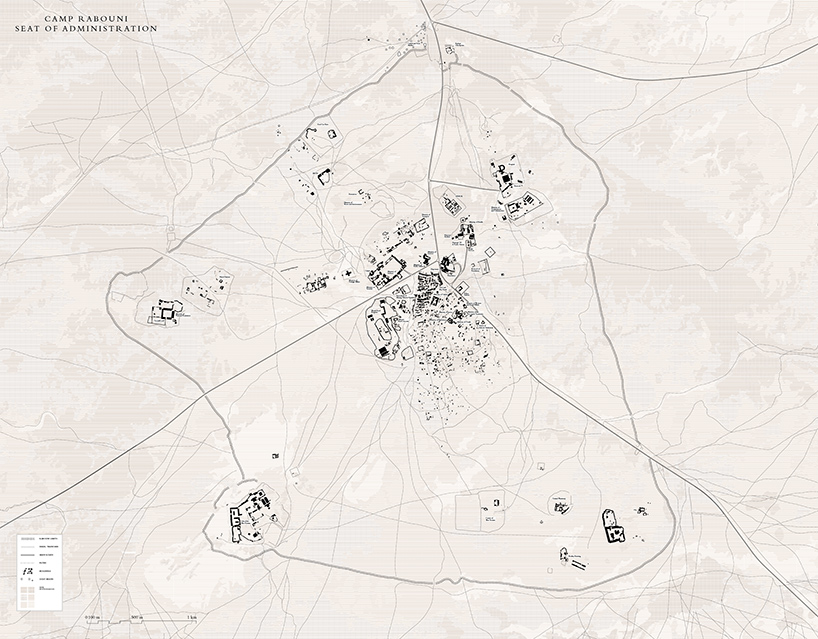
camp rabouni — seat of administration
image © manuel herz architects
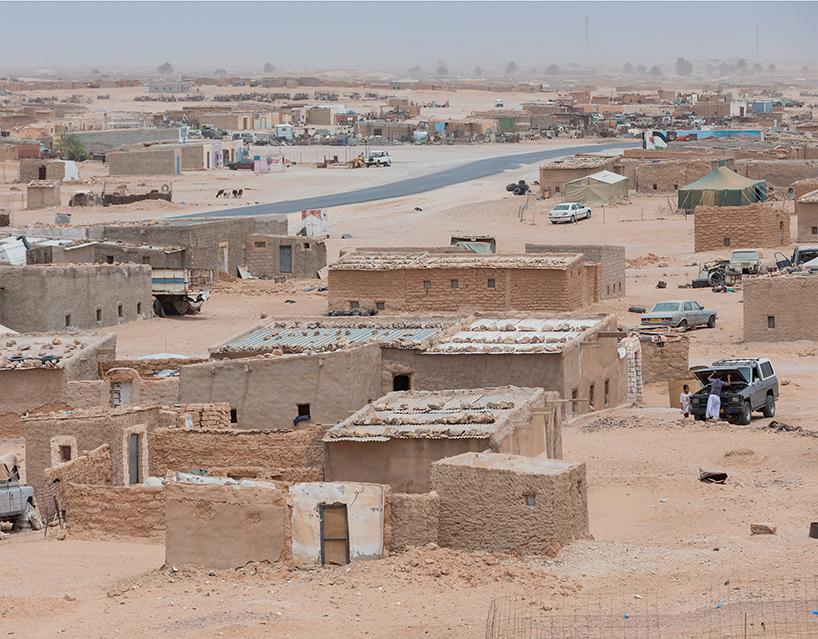
everyday life in the community
image © iwan baan

the national parliament building
image © iwan baan
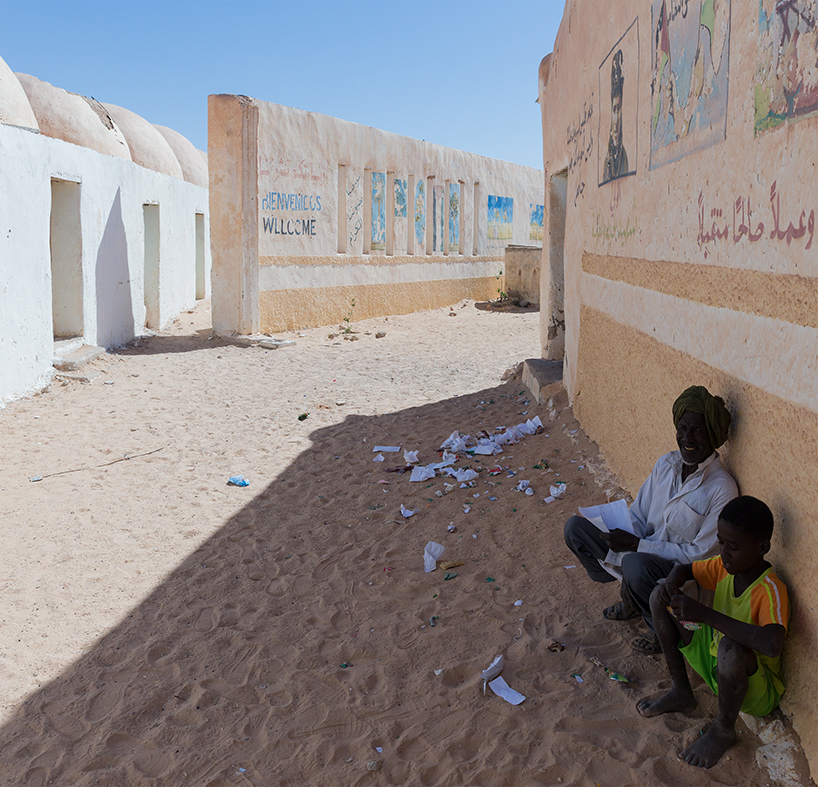
valencia primary school
image © iwan baan
project info:
name: pavilion of the western sahara
participant: manuel herz with the national union of sahrawi women
collaborators: fatma mehdi hassan, warda abdelfatah mohamed, chej mohamed chadad, françois de font-réaulx, penny alevizou
weaving: ajdaija salak, jaiduma balaly, achaia daihy, aichatu almahyub damaha, atfarah laman, safia said, sukena dahwar, wanaha bala, salma daidu, asania mohamed asuelam, fatma haimad, fatimatu buda, anaga gasuani, alhasina hasana, daidu ambarak, fatimatu akrum, manati amaigal, fatimatu labaihi, alueha jatri, fatma aljer, tchla pachri, argaya achaij, mahyuba ahmatu, fatma ambarak, atfarah asalak, mahyuba alaal, angaya ahmed, mariam mohamed, ajrebicha ahmed, fatimatu abdy, asalma achej
photography: iwan baan
curatorial advisor: nina zimmer
special thanks to: isabel zumtobel, thomas könig, johann raßhofer, johannes berglar, thomas krings-ernst, lars müller and the venice biennale team
with the support of: university of basel, nordrhein-westfälische akademie der wissenschaften und der künste, johann raßhofer schreinerei, zumtobel lighting, typico, swiss arts council pro helvetia
Save
Save
Save
Save
Save
Save
Save
Save
Save
Save
Save
Save
Save
Save
Save
Save
Save
